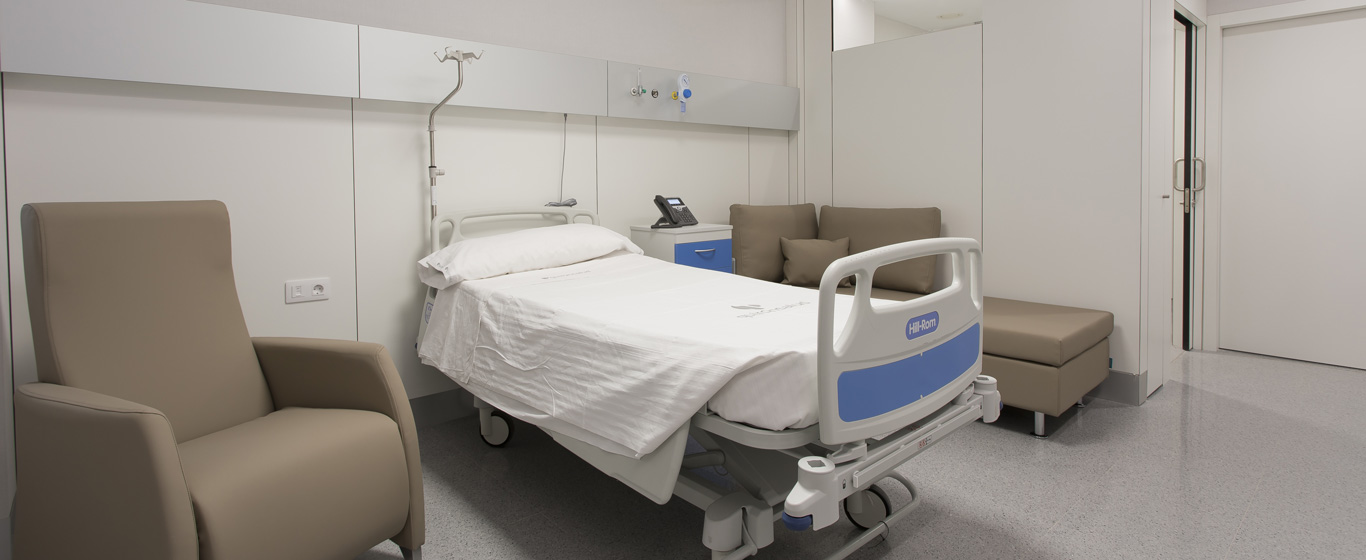Hiatal Hernia
Can a Hiatal Hernia be cured? Information on the causes, symptoms, and treatments of this condition.
Symptoms and Causes
A hiatal hernia occurs when a part of the stomach rises into the chest through the hiatus, which is the opening in the diaphragm through which the esophagus reaches the stomach. It can occur at any age, although it is more common for the muscle around the opening to relax after 50 years of age.
According to its characteristics, the hiatal hernia is classified into two types:
- Sliding Hiatal Hernia: This is the most common. In addition to the stomach, the lower esophageal sphincter (LES) also moves into the chest cavity.
- Paraesophageal Hiatal Hernia: The hiatus remains in its place while a portion of the upper part of the stomach is positioned at the same level as the esophagus.
If the hiatal hernia is small, it usually doesn't present symptoms and may go unnoticed unless detected during tests for diagnosing another condition. However, when it is larger, it can cause severe symptoms that require specialized medical attention.
Symptoms
When a hiatal hernia presents symptoms, it is characterized by:
- Heartburn
- Pyrosis: A burning sensation in the esophagus, sometimes extending to the throat.
- Regurgitation and reflux: Both swallowed food and liquids, as well as gastric acid, flow back into the esophagus.
- Difficulty swallowing.
- Abdominal pain.
- Breathing difficulty.
- Throat clearing.
- Feeling of fullness despite not having eaten excessively.
- Less frequently, bleeding from the inner lining of the hernia detected by vomiting blood or dark stools.
Causes
The weakness of the diaphragm is the cause of a hiatal hernia. Although the exact reason for this is not yet understood, the following factors are believed to play a role:
- Deterioration of tissues over time.
- Trauma or abdominal surgeries.
- Excessive pressure on the muscles due to constant coughing, lifting heavy objects, vomiting, or defecating.
- Having a larger-than-normal hiatus.
Risk Factors
The chances of having a hiatal hernia increase in the following cases:
- Being over 50 years old.
- Being obese.
- Being pregnant, as weight gain compresses the diaphragm.
Complications
The main complication of a hiatal hernia is gastroesophageal reflux, which can lead to:
- Esophagitis: Inflammation of the inner layers of the esophagus due to excess acid.
- Barrett's Esophagus: Changes in the mucosa of the esophagus, which adopts stomach-like or intestinal features.
- Esophageal Cancer.
Prevention
Hiatal hernia cannot be prevented, but certain measures can be taken to minimize symptoms:
- Avoid large meals.
- Reduce fat consumption.
- Do not drink alcohol.
- Maintain a healthy weight.
- Do not smoke.
- Avoid bending or lying down after meals.
- Raise the head of the bed to keep the upper body slightly elevated when lying down.
What doctor treats a hiatal hernia?
Gastrointestinal specialists and general practitioners diagnose and treat hiatal hernia.
Diagnosis
A hiatal hernia is diagnosed by studying the patient's symptoms and lifestyle habits. To confirm the diagnosis and determine its size, tests such as:
- X-rays: To check how food and liquids move from the esophagus to the stomach and assess if there is reflux.
- Gastroscopy: A tube with a video camera is inserted through the mouth to capture images of the inside of the esophagus and stomach. This technique detects esophagitis and is used to obtain samples for biopsy of potential lesions.
- Esophageal manometry: Studies the movement of the esophagus when swallowing liquids.
- pHmetry: A probe is inserted through the nose to measure the pH in both the esophagus and stomach and evaluate the intensity of the reflux.
Treatment
The treatment for a hiatal hernia depends on its size. In mild cases, following the recommended preventive measures is enough. When the hiatal hernia is more severe, the options include:
- Pharmacological treatment:
- Antacids to neutralize stomach acidity.
- Antisecretory drugs to reduce the production of stomach acids.
- Prokinetics to increase the muscle tone of the lower esophageal sphincter.
- Surgery: This is the last resort when medication and lifestyle changes do not provide adequate results. Typically, surgery is performed via laparoscopy, where the hernia is repaired and the stomach is repositioned beneath the diaphragm.

































































































